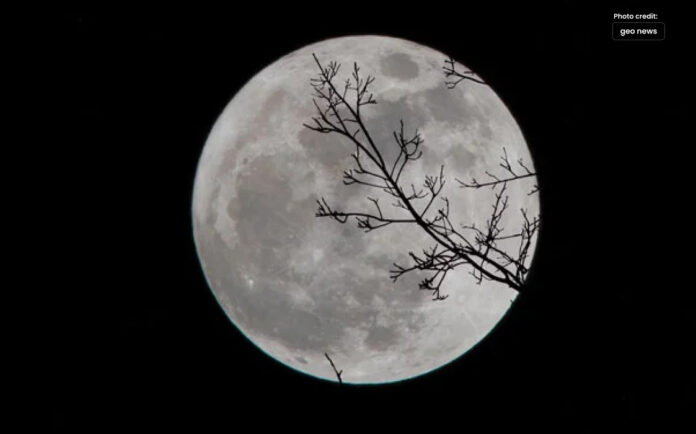Full moon of year, also known “Wolf moon” expected to rise tonight.
According to Forbes, the first full moon of the year, often known as the “Wolf moon,” will expected to rise tonight.
As a result of the moonlight, Mercury, and Mars will be visible on Friday morning.
“Wolf Moon” will peak at 12:54 p.m. ET, will be visible for most of the Northern Hemisphere after dusk, according to the United States Naval Observatory.
The first full moon of the year will be visible tonight, experts have named it the Wolf-Moon.
Wolf-Moon:
Ancient people named it the wolf moon because wolves in the forest would howl upon seeing the fourteenth moon.
Typically, around January, will be visible for a short period of time, with moonrise at 4:56 pm and sunset eight minutes later at 5:04 pm.
The full moon’s radiance will cast its glow on neighboring planets: Venus is set to ascend at 5:11 am on Friday, while Mercury will follow suit nearly an hour later at 6:05 am. Mars will then make its appearance at 6:09 am.
According to the National Aeronautics and Space Administration (NASA), the moon’s 29.5-day cycle includes one full moon per month, which may not always occur on the same day.
The moon goes through eight phases during this time: new moon, waxing crescent, first quarter, waxing gibbous, full moon, waning gibbous, third quarter and waning crescent.
During the full moon phase, the moon appears as a perfect circle in the sky because the Sun’s rays illuminate the entire side of the moon that faces Earth.
According to EarthSky, if you use binoculars, you will be able to see Venus shining strongly soon before dawn on Saturday.
45 minutes before sunrise, Mercury will be visible lower in the sky. Clear skies may allow observers to catch a glimpse of Mars, which will seem darker next to Mercury.
On Saturday morning, NASA predicts that the waning moon—the phase between full and half moon—will pass near the brightest star in the Leo constellation, Regulus.
Read Also this: Super Blue Moon: Here’s How to See Rare Celestial Event




